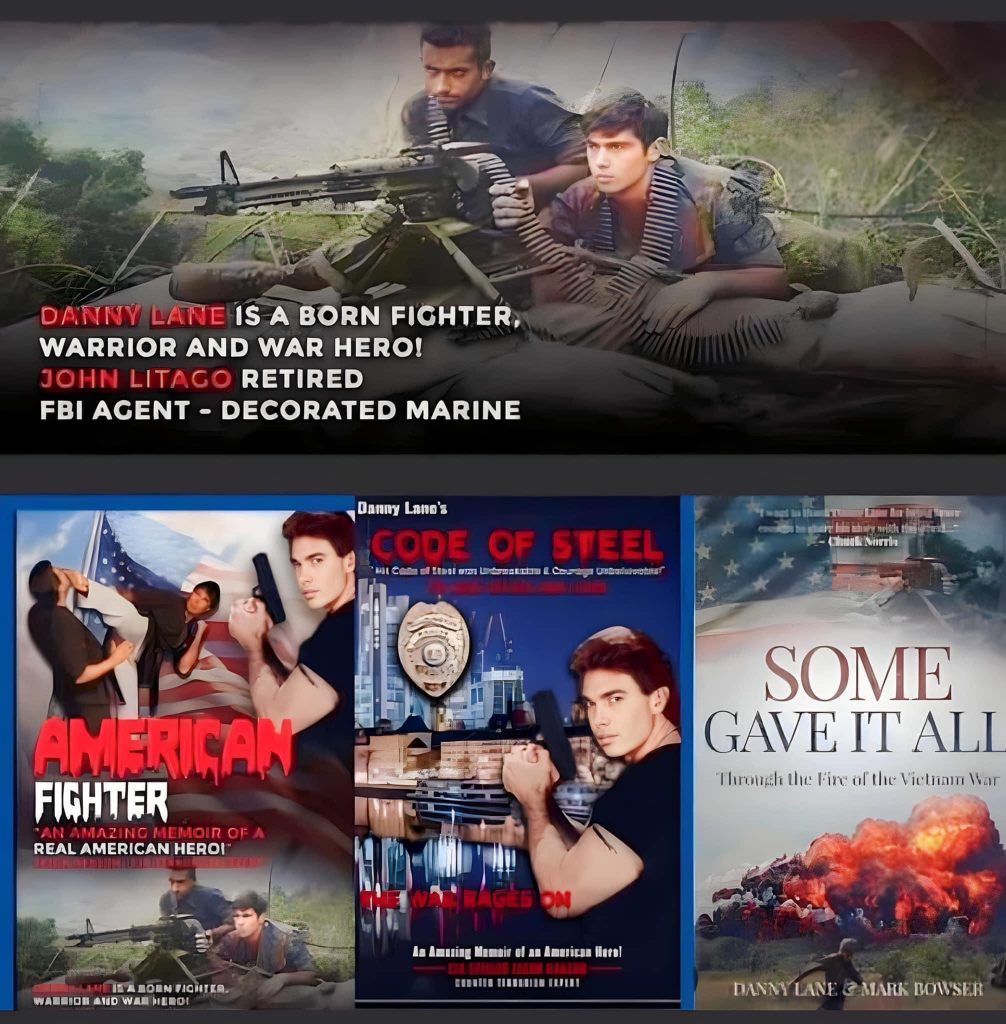Infantry Grunt MOS #0311 – Small Arms Expert -M-60 Machine Gunner – 81 Mortar Specialist – Forward Observer.

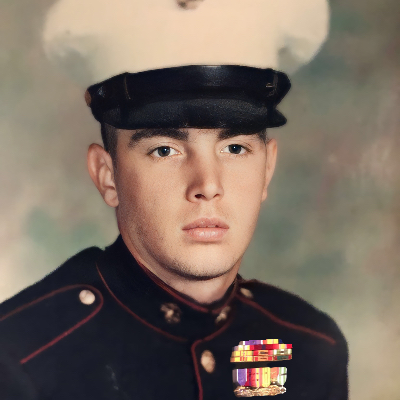
Daniel E. Lane, United States Marine 1st Marine Division/3rd Battalion/5th Marines, Vietnam Combat Veteran 1968-1969.
Below with Sotere “The Greek” Karas watching for an NVA attack near Laos in late 1969 on Operation Pipestone Canyon.
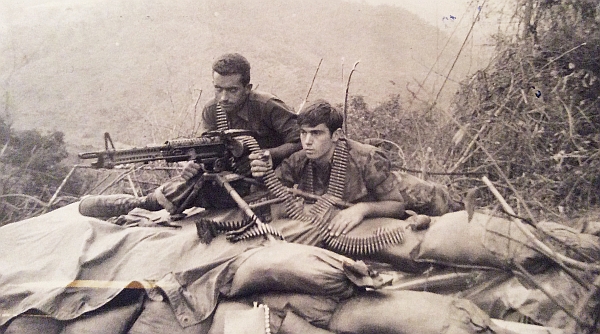
Corporal Daniel “Danny” Lane served with the 1st Marine Division, 3rd Battalion/5th Marine Regiment in 1968-1969 in Vietnam. The 3/5 operated out of the An Hoa Combat Base aka “Rocket City.” An Hoa was near “Dodge City.”, an area known to the Marines for its shoot-‘ em-up atmosphere twenty kilometers south of Da Nang.
He participated in the following military operations: Operation Meade River, Operation Taylor Common, Operation Durham Peak, Operation Pipestone Canyon and other unclassified covert operations.
Danny was a Squad Leader and in charge of leading four (4) Fire Teams into combat at the age of 19 years old.
He specialized in 60mm mortars, M-60 machine guns, M-79 grenade launcher, M-16 Rifle and explosives. He is certified as a SMALL ARMS EXPERT.
On occasion, he was an FO (Forward Observer ) for other infantry companies during major operations. For his combat efforts, Danny was awarded 2 Purple Hearts the Marine Corps Combat Action Medal, and other individual and unit decorations.
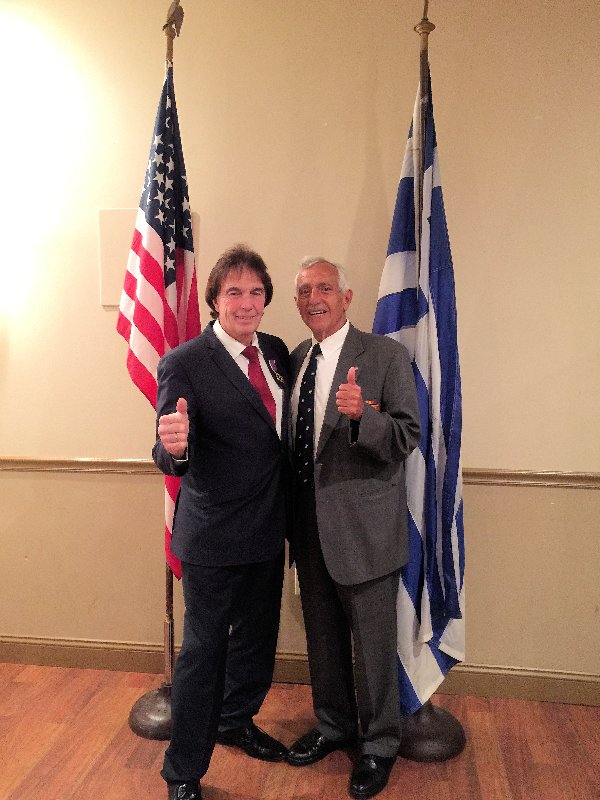
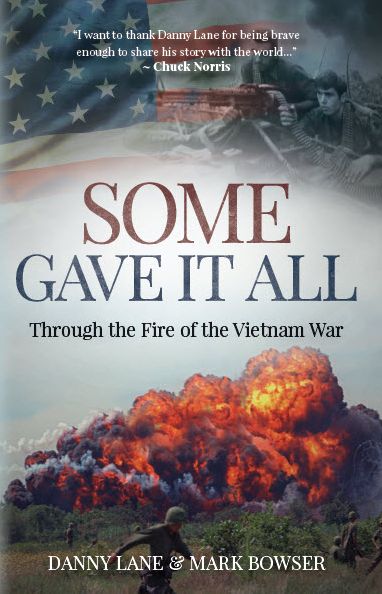
Order your autographed copy here.

Below are a few historic pictures that made it home during the war.
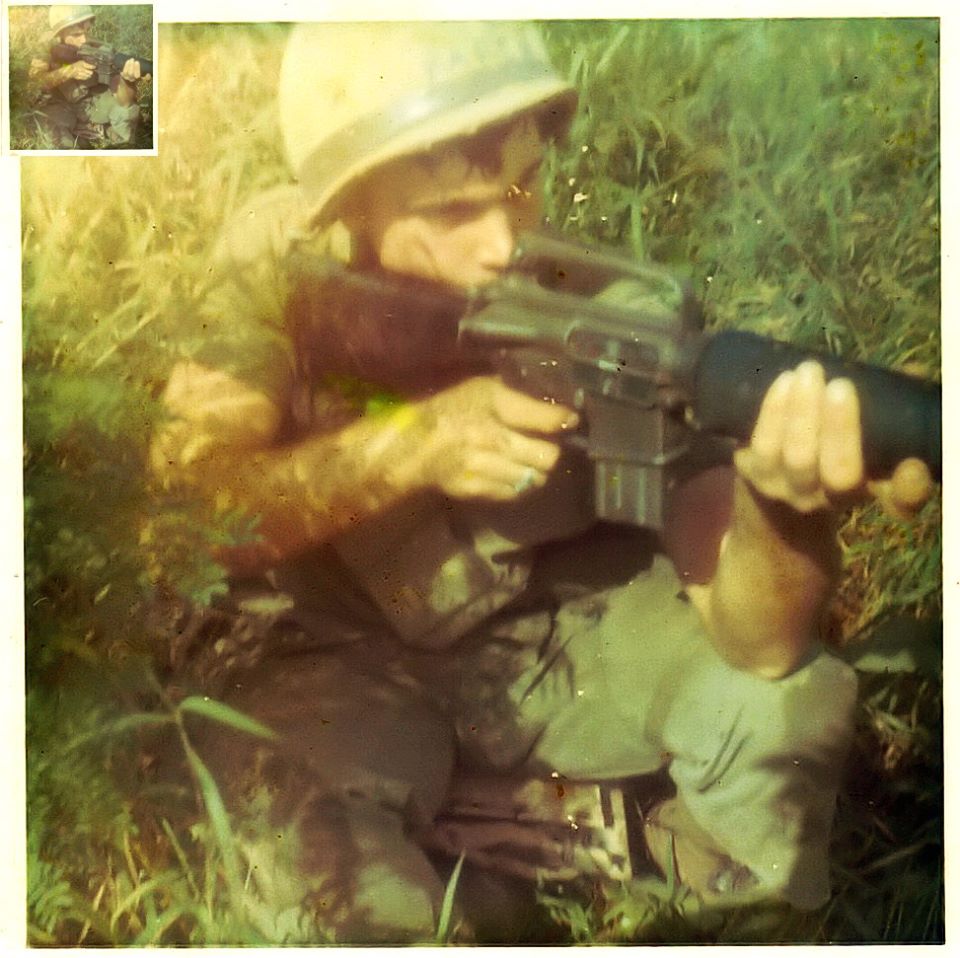
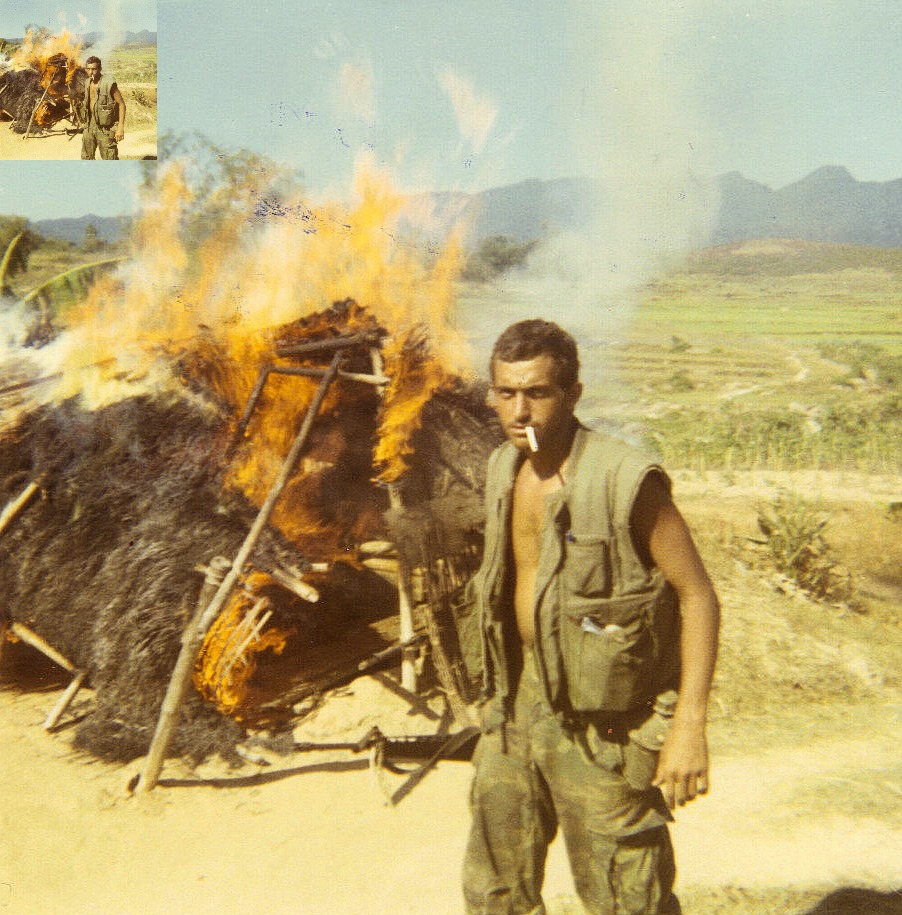
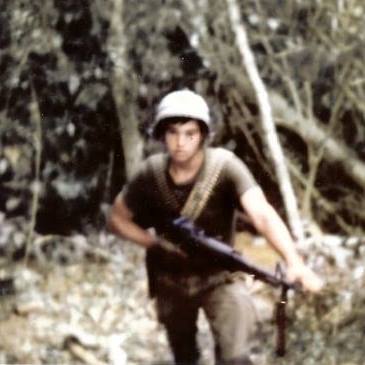
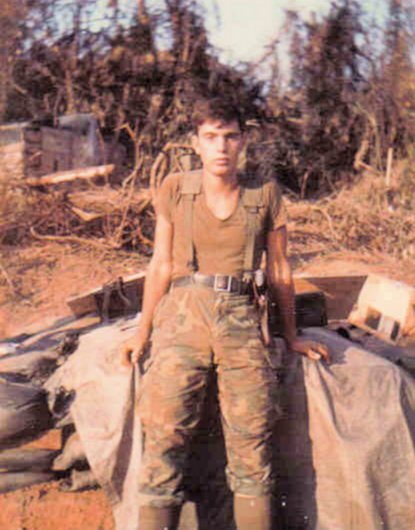


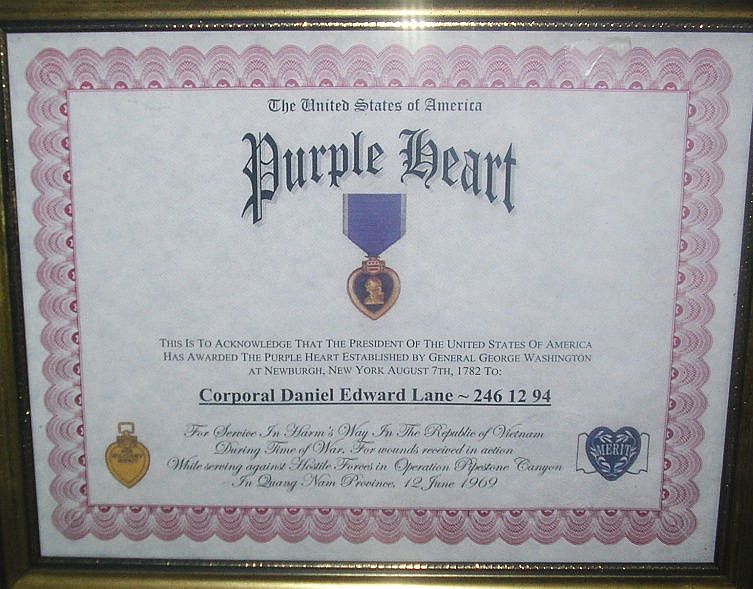



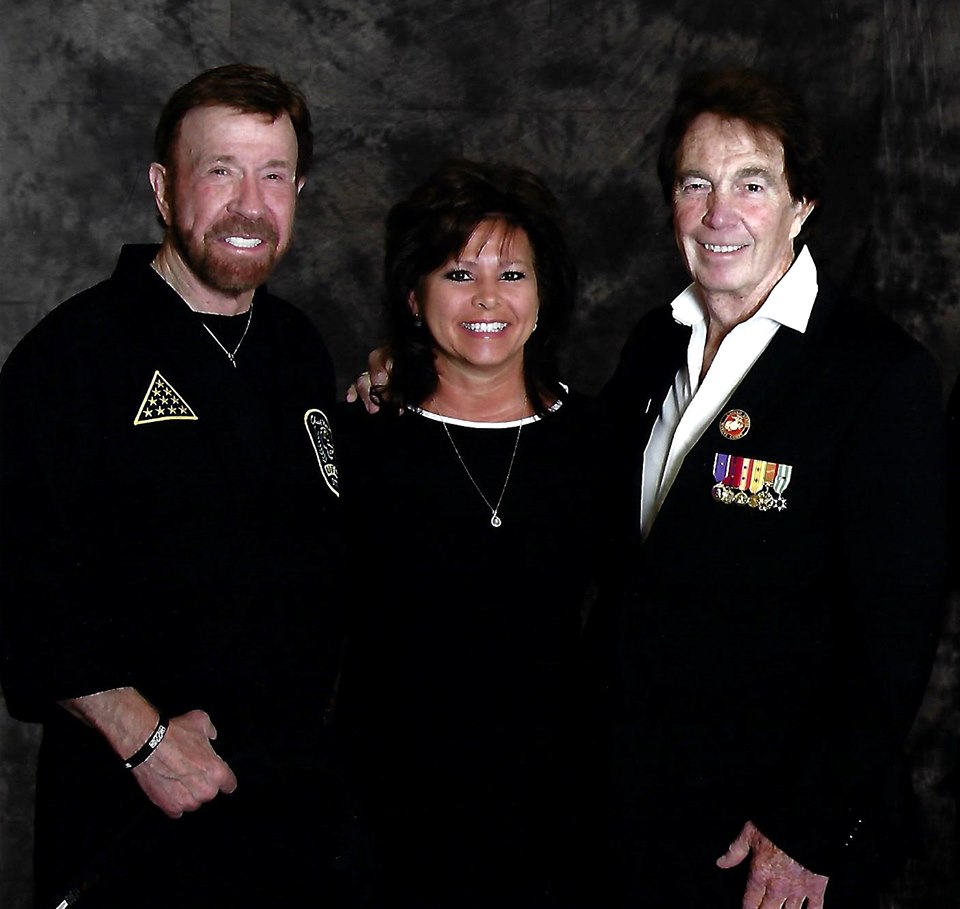
Danny Lane Marine Operations in Vietnam
Operation Meade River, November 1968
On November 10, 1968 at 4am during a moonsoon, (5000) Five Thousand Marines, invaded Dodge City. Six Marine infantry battalions participated in the largest helicopter assault of the war.
The North Vietnamese Army and the Viet Cong had embedded themselves in Dodge City, known for its old west shoot ’em up gunslinger style of fighting between Marines & the Viet Cong and North Vietnamese Army.
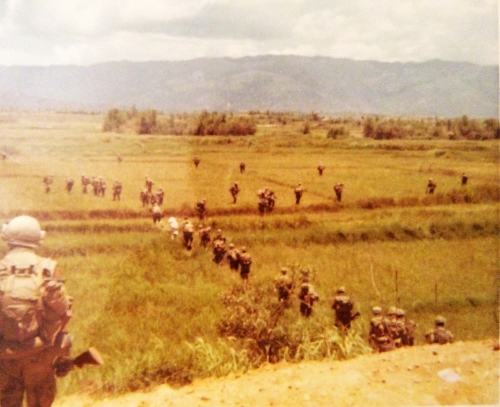
Operation Meade River concluded on December 9, 1968. Stars & Stripes Newspaper reported that 108 Marines lost their lives in the operation. Another 513 were wounded. Stars & Stripes also reported that there were 1,325 confirmed enemy casualties.
It was estimated that another 3000 enemy soldiers bodies could never be found because they were obliterated from the pin point accuracy of the American bombings from heavy artillery, fixed-wing aircraft and battleships such as the most decorated battleship in US history, the battleship, New Jersey.
The New Jersey, also known as “Big J”, had an armament which included nine devastating 16 inch, 50 caliber mark 7 guns which could hit a bulls eye at a distance upward towards 58 miles.
All of this devastation took place in an area not much larger than your own neighborhood. The entire operation took place in a small trek of land measuring only two square miles.
Dodge City was everything it was built up to be and more. When 10,000 men create havoc on each other in a two square mile area for nineteen days and nights total devastation is sure to happen.
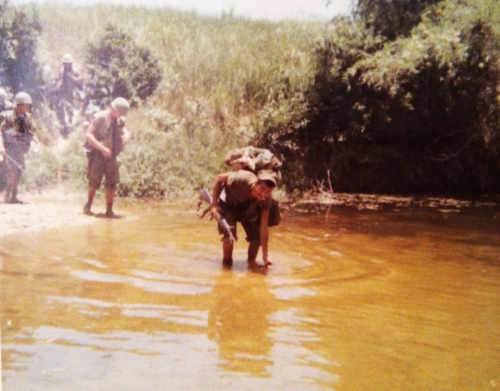
Operation Taylor Common
Operation Taylor Common was a search and destroy operation conducted by Task Force Yankee, a task force of the 1st Marine Division supported by the Army of the Republic of Vietnam (ARVN), southwest of Hoa An from 6 December 1968 to 8 March 1969.
Base Area 112 was a Vietcong and People’s Army of Vietnam base area located in the mountains of Quảng Nam Province southwest of Danang near the area known to the Marines as the “Arizona Territory” The base was believed to support the PAVN 21st Regiment, 3rd Battalion, 68B Rocket Regiment, 2nd Battalion, 141st Regiment and command and support units.[1]
The operational plan was for “Task Force Yankee”, an ad hoc unit based around the 5th Marine Regiment, to secure the An Hoa Basin together with the ARVN 1st Ranger Group, the Task Force would then construct a series of fire support bases to support operations west into the Base Area and finally destroy the Base Area 112.
The operation commenced on 7 December with the 2nd Battalion 7th Marines being landed by helicopters from HMM-165 and HMM-364 into the Arizona Territory to act as a blocking force for the ARVN Rangers. The 2nd Battalion 5th Marines and 3rd Battalion 5th Marines which had just completed Operation Meade River had already moved southwest from the Liberty Bridge.
On 9 December control of the operation passed to Colonel Michael M. Sparks, commander of the 3rd Marine Regiment which had recently redeployed.
On 11 December following a preparatory air and artillery strike the engineers of Company B, 3rd Engineer Battalion supported by Company K 5th Marines landed on Hill 575 8 km southwest of An Hoa Combat Base and established Firebase Lance.
On 15 December several M-121 Combat Trap bombs were dropped on Hill 558 in an experiment to blast helicopter landing zones in dense jungle. The Combat Trap was only a partial success and Company B, 3rd Engineer Battalion supported by 1st Battalion 3rd Marines were landed by helicopters to establish Firebase Spear.
On 18 December 3rd Battalion 3rd Marines was landed on Hill 375 4 km southwest of Firebase Spear and established Combat Operations Base Mace.
Having established their operating bases the Marines began patrolling west into the eastern part of Base Area 112, while they found numerous abandoned bunkers, barracks and support facilities no major encounters with the PAVN/Vietcong occurred and Phase 2 of the operation ended on 31 December 1968.
On 1 January 1969 3/5 Marines was landed at Combat Operations Base Javelin however heavy PAVN fire prevented a landing there and the 3rd Battalion 3rd Marines was landed on Hill 728 and fought their way to Hill 508 seizing it by 15 January and establishing Firebase Maxwell there. The Marines then proceeded to search the western part of Base Area 112, establishing further firebases as they went and uncovering PAVN base camps and stores.
On 15 January an Army UH-1H carrying COL Sparks and his command group was hit by machine-gun fire near Firebase Maxwell and crashed killing all on board.
On 29 January the 1st Battalion 7th Marines on Go Noi Island observed a 300 strong PAVN force crossing the Song Ky Lam and artillery fire was directed against them, the PAVN tried to escape to the west but were engaged by Company D 5th Marines. The fighting continued all night before the PAVN broke contact and the next morning the bodies of 72 PAVN were found.
On 10 February BLT 3rd Battalion 26th Marines joined the operation and was landed in the Arizona Territory where they engaged numerous small PAVN units. At the end of February Company L 3/26 Marines killed 75 PAVN and destroyed two anti-aircraft machine-gun positions.
By mid-February Base Area 112 had been largely neutralized and the participating units were needed in the DMZ area, so the operation was progressively scaled back with the 3/3 Marines and the 3rd Marines command group being withdrawn on the 16th and redeployed to Dong Ha Combat Base, followed the next day by 1/3 Marines.
After midnight on 23 February PAVN mortars hit An Hoa Combat Base triggering explosions in the ammunition dumps, followed by a sapper attack which was repulsed with gunship and artillery fire. At the same time firebases Maxwell and Tomahawk were hit by mortar and sapper attacks.
Due to the withdrawal of participating units from the operation it was decided to withdraw the Marines from the western firebases.On 3 March a patrol from Company M 3/5 Marines was ambushed near Firebase Maxwell, 3 Marines were killed and 2 of the bodies were left behind as the Company withdrew. The next day the Marines recovered one of the bodies and the following day attempted to recover the other body but were ambushed again losing 2 Marines killed who bodies could not be recovered. On 6 March the Marines tried to recover the bodies again but were forced back by PAVN fire, the bodies were later recovered by a reconnaissance team. Firebase Tomahawk was evacuated and closed on 5 March while Maxwell was closed on 7 March.
The Operation ended on 8 March 1969. Marine losses were 183 killed and 1,487 wounded,
ARVN losses were 100 killed and 378 wounded.
The Marines reported 1,398 PAVN were killed and took 29 POW.
Two Marines, Lance Corporal William R. Prom, and PFC Daniel Bruce were awarded the Medal of Honor for gallantry during Taylor Common.
Operation Pipestone Canyon
Started on May 26 and ran through November 7, 1969
This was a major land clearing operation in the Dodge City and Go Noi Island area 10-20K south of Da Nang for units of the 1st Marine Div, primarily the 1st Marines, plus SLF Alpha, the 51st ARVN Reg, and 2d Korean Marine Bde. Prior to the war about 27,000 people lived in this area but by 1969 it was a tunneled, cave infested VC haven. Most of the island’s residents had fled to other areas in Quang Nam Province. This operation was in the same areas as ALLEN BROOK in May and MEADE RIVER in Dec, 1968. The objective was to clear the seven to nine enemy bns out of the area and reopen Route 4 from Dai Loc to Dien Ban once and for all. The operation had many phases and Inf units moving to phase lines and blocking positions. Joint Army and Marine landing clearing companies cleared 250 acres at a time to a depth of 6 inches completely destroying the area for military use by the enemy.
In all 852 enemy were killed, 58 captured plus 410 weapons and some impressive food caches. USMC losses were 71 KIA and 498 WIA; mostly to mines. During 1970, the GVN would start a huge resettlement into this area. started on May 26 and ran through November 7, 1969 in Goi Noi Island and Dodge City. This was a multi battalion effort and included ARVNs and ROKs (Republic of Korea Marines). 3/5’s part of this op involved driving into east Goi Noi alongside BLT 1/26, then establishing a blocking position west of the railroad berm on 30 May. The results of this op was to “transform Goi Noi Island from a heavily vegetated tract into a barren wasteland, free of tree lines and other cover long used by the enemy to conceal his movements across the island.”
Operation Durham Peak ran from July 18 to August 13, 1969. This operation took place in Antenna Valley and the Que Son Mountains. Enemy forces fleeing the carnage in Goi Noi and Dodge City because of Pipestone Canyon were filtering into this area. 2nd and 3rd Battalions, 5th Marines, along with 2/1, participated. The Army’s Americal Division established blocking positions south of the AO. According to Murphy most of the heavy contact was sustained by a platoon of Hotel Company 2/1, ambushed on July 26th.
July 20th, Danny and his squad were taken off of Operation Pipestone Canyon and assigned to a new operation that was called Durham Peak. The goal of Durham Peak was to send Marines into the Antenna Valley which was adjacent to the Que Son Mountains. This was about six miles south of where they had been at An Hoa.
The terrain of this region can be quite daunting. The jagged peaks of the Que Son Mountains tower about 2,700 feet above the jungle canopy. The lowlands are carpeted with a thick, densely packed undergrowth which is cut into an uncountable number of deep ravines. Not a place you would want to go for a hike on a warm, sunny afternoon. But, that is where the Marines were sent and Marines go where they are sent.
Intelligence reports indicated that the enemy forces that were fleeing the Americans at Go Noi Island and Dodge City had now embedded themselves in this treacherous region. Now, it was time for the Marines to go get them out.
As Danny and his team pushed southward into the mountain chain, they began to find evidence of the enemy. They discovered abandoned bunkers, hooches, supply caches, and even a few fresh graves. They were obviously on the right track. As they continued the push further into the mountains, enemy resistance began to pop up. It was light initially, but then it began to intensify.
The Marines were getting closer to the lions den and the lions weren’t too pleased about it. As the hike continued, Danny felt as though he was having a little de ja vu. The terrain looked very familiar and for good reason. He had been there during Operation Taylor Common. The Vietnam War was one of oddities. Take this land and then give it back and then take it again.
The mission continued for three long weeks. Every day was the same. It began to get monotonous, hike everyday, search for the enemy, and dig in at night.
It was like going to the same mundane job every day doing the same boring activities just to get up and do it all over again the next day. The only difference here was that people kept trying to kill you and you never got a break. In the jungles of Southeast Asia, the Marine never had the opportunity to go home at night and relax in front of the television set. Instead, you had live theater every night where the actors were the Viet Cong breathing down your neck. This live theater did have a short run though. The mission didn’t go as planned and it was called off on August 13th.
Danny and his squad were then put back on Operation Pipestone Canyon to help the 7th Marines clear out the rest of the enemy near Da Nang.
Danny was wounded TWICE in Operation Pipestone Canyon. Several of his SQUAD shown here sadly didn’t make it!
USMC losses were 71 (KIA) Killed In Action and 498 (WIA) Wounded In Action.
852 enemy were killed…..
Danny received 2 PURPLE HEARTS for his COMBAT WOUNDS.
Danny with his SQUAD 3/5 just before Operation PipeStone Canyon.


THE PURPLE HEART
There is a time in some men’s lives their country calls in time of war, and asked to heed what they deplore. These gallant men who fight with pride with pain that lives and dies inside. They place their lives in dangers way to face the enemy each day. Some wounds severe with loss of limb, while some will heal and try again. To suffer wounds with death at hand, to fight a war in many lands. They do their duty and beyond they’re swift to act and to respond. They shed their blood, some live, some die to keep Old Glory flying high. Their children cry, their widows weep, the blood that’s shed runs very deep. They live with pain for many years and suffer stress that brings the tears. To honor those who played the part we give, with thanks, the Purple Heart.

Danny spent half of his adult life serving his country in the military and his nation as a police officer.

